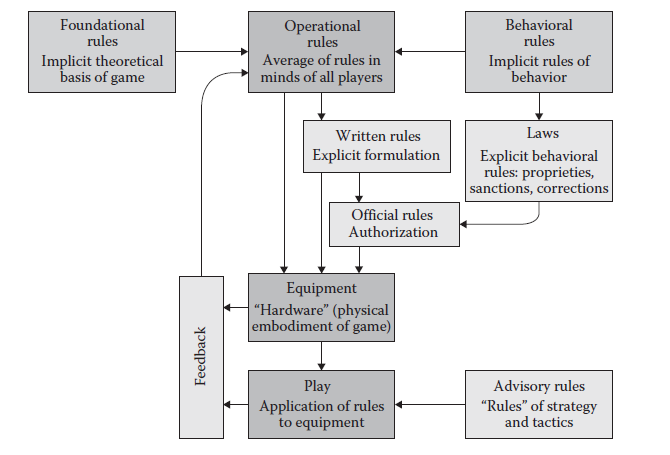Salen and Zimmerman’s Model §
- There are three kinds of rules
- Operational - the guidelines player require in order to play. The rules written out.
- It concerns external, representational events that impact player interactivity.
- Constitutive - the formal, logical, and mathematical structures underlying the game. The need not correspond to material form, but most likely correspond to relationships between items.
- They are concerned with the events corresponding to processing player choice rather than events that represent the choice.
- Implicit - unwritten rules that concern etiquette, good sportsmanship and other implied rules of proper game behavior.
- It also includes underlying assumptions. Questioning Implicit rules can give good design ideas.
- The Constitutive and Operational rules work together to generate the formal meaning of a game.
Parlett’s Model §

- Operational Rules - what the players do to play the game.
- Foundational Rules - the underlying formal (mathematical ) structure of a game.
- Behavioral rules - implicit to the gameplay but which are understood as part of good sportsmanship.
- Written rules - the rules that come with the game as a written document.
- Video games have shied away from this because it is impossible to encode all the non-linearities. Instead, the game teaches the mechanics through interactive tutorials.
- Laws - only formed when games are played in serious competitive settings to clarify good sportsmanship or existing official written rules.
- Official Rules - created when a game is played seriously enough that a group of players feels the need to merge the written rules with laws.
- Advisory Rules - tips to help play the game better, and not rules from a mechanics perspective.
- House Rules - games that are defined by the players. They are created as a response to a perceived deficiency after a few rounds of play.
Links §
